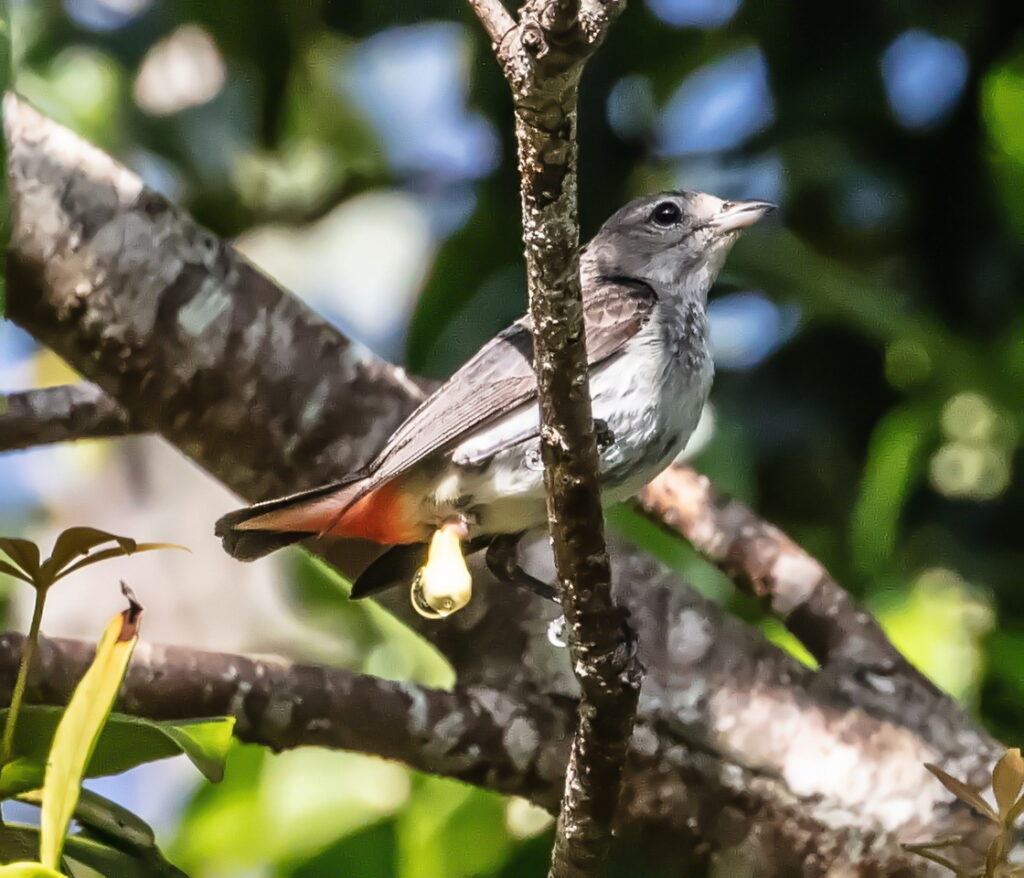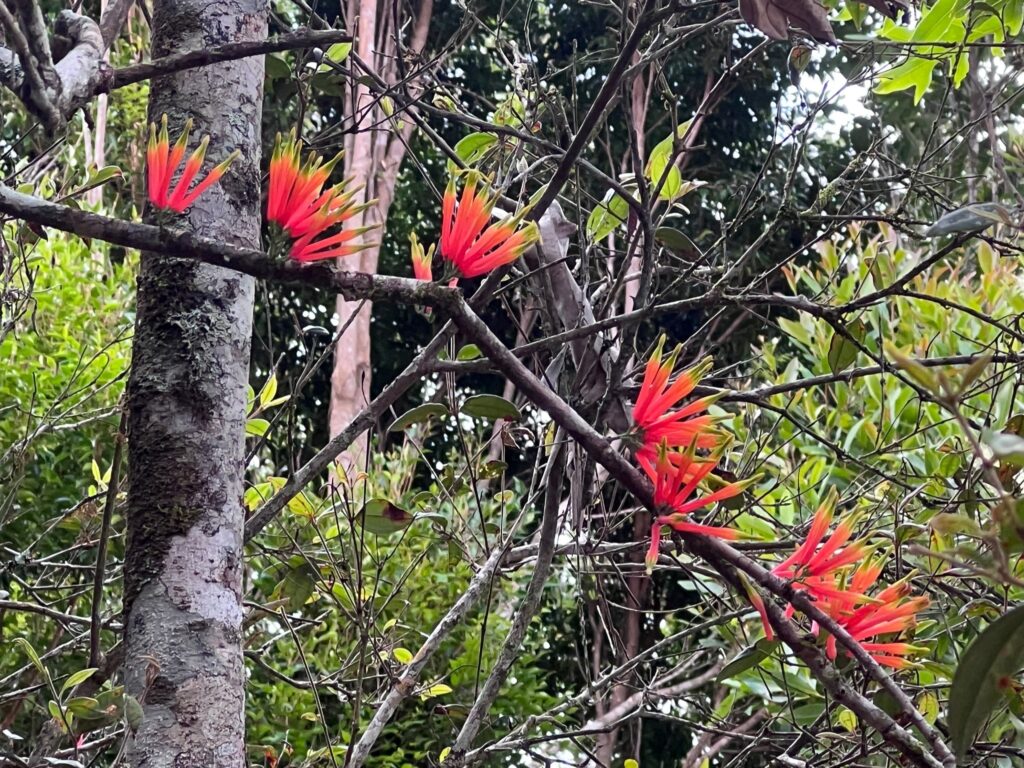Over the wet season two species of mistletoe (Amylotheca subumbellata and Amylotheca dictyophleba) have been flowering and fruiting in the village.
This is a window of seasonal plenty for Mistletoe Birds (Dicaeum hirundinaceum) who live mainly on the mistletoe fruit and repay the favour by spreading the seeds of mistletoe.
The photo here of a female mistletoe bird was taken from the back deck of #56 at the start of the rainforest walk in mid-February. It wasn’t until the photo was uploaded and cropped that it became apparent the shot had captured a gluey seed locked and loaded for dispersal.

Although there are other birds that can spread mistletoe, the mistletoe bird has evolved a highly specialised and efficient method of ensuring future crops of mistletoe berries.
As a parasite, mistletoe seed needs to be placed in a particular way in the (usually) upper branches of the host tree. Mistletoe minimizes opportunistic feeding by less specialist dispersal species by producing few, inconspicuous fruits. The fruit is low in protein and so the mistletoe bird must eat large quantities for reproduction and moulting.

The mistletoe bird has evolved a digestive system that processes the fruit particularly quickly and with little damage to the seed. It takes between four and 25 minutes for the fruit to be processed and ready for “planting”.
The fruit emerges with a sticky coating that requires the bird to employ a special technique to detach it from the anal vent. Mistletoe birds often stand facing the host plant and with a wiping action deposits the fruit in a string along the perch. Seeds that emerge from mistletoe birds are much stickier than those of honeyeaters who also snack on mistletoe fruit. Seeds ejected by honeyeaters fall randomly and often miss the strong bonding to the host tree branch that is essential to keep the mistletoe supplied with a source of fluid as it grows.
Mistletoe birds occur throughout Australia in any habitat where mistletoe occurs. They are the only Australian representative of the flowerpecker family, Dicaeidae, which comprises 50 mistletoe-loving species distributed through tropical southern Asia and Australasia.
The male mistletoe bird is brightly and colourfully feathered while the female has more demure plumage, dark grey above with a white throat, light grey underparts and just a touch of pinkish red under the tail.

Jamie Oliver previously posted a link to a great David Attenborough segment that captured the whole process including a time-lapse of seed germination. That link is here.
In early March a number of mistletoes were flowering nicely in “the cutting” around 21-27 Mt Spec Road.
Text by Peter Cooke
Note: no AI used in producing this post, just good old cut and paste plagiarism from various sources.

Absolutely fascinating, loved this piece. Thanks to Han and Peter Cook for sharing their beautiful pictures.